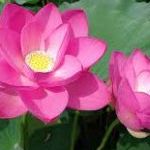- 結論(先に要点)
- 1. 誕生「いつ」──年代は諸説、日付は地域差あり
- 2. 誕生「どこで」──ルンビニーという聖地
- 3. 誕生「どの家系か」──シャカ族の王子として
- 4. 伝承の意義──七歩と「唯我独尊」をどう読むか
- 5. 史実と信仰の重なり──どう受け取ればよいか
- 6. 現代の祝い方──花まつりを暮らしの中へ
- まとめ
- よくある質問(Q&A)
- 参考(用語の簡潔定義)
- English Version
- Key Takeaways (Upfront)
- 1) “When” — A Range Rather Than a Point
- 2) “Where” — The Holy Site of Lumbinī
- 3) “Which Lineage” — A Prince of the Śākya Clan
- 4) Reading the Legends
- 5) Bridging History and Faith
- Summary
- FAQ
- Mini Glossary (JP → EN)
結論(先に要点)
誕生年代・場所・家系のポイント
仏陀(ブッダ)、すなわちゴータマ・シッダッタ(サンスクリット:シッダールタ)の誕生年代は、紀元前5~6世紀ごろと幅があり、定説はありません。日本では4月8日生誕の伝承が広く知られますが、地域や暦の違いで異説もあります。生誕地はルンビニー(現ネパール南部)とされ、彼はシャカ(シャーキャ)族の小国の王家に生まれた王子でした。父はシュッドーダナ(浄飯王)、母はマーヤー夫人と伝わります。
1. 誕生「いつ」──年代は諸説、日付は地域差あり
年代が一つに定まらない理由
古代インドの年代記は断片的で、王朝記録や後世の仏典編纂の間にずれが生じました。そのため、紀元前400年ごろ説と紀元前500年ごろ説の幅が残っています。歴史研究では、文献と遺跡を突き合わせ、誤差を許容しつつ「範囲」で理解します。
日本の「花まつり」と4月8日
日本では旧暦4月8日を灌仏会(かんぶつえ)/花まつりとして祝い、色鮮やかな花御堂を飾り、誕生仏へ甘茶をそそぎます。これは「誕生時に甘露の雨が降った」という伝承にちなむ作法です(各地域で日付や作法の差があります)。
2. 誕生「どこで」──ルンビニーという聖地
ルンビニーの位置と遺跡
ルンビニーは現ネパール南部、インド国境に近い地。古来より仏陀誕生の地として尊ばれ、1997年にはユネスコ世界遺産に登録されました。現地には伝承ゆかりの池やアショーカ王柱が残り、巡礼者が絶えません。
「生家」カピラヴァツと移動の物語
仏典では、生家の都カピラヴァツから母マーヤー夫人が里帰りの途上、ルンビニー園で産気づいたと伝えます。遊牧的で道中出産も珍しくなかった社会背景を思うと、物語は生活実感に根差しています。
3. 誕生「どの家系か」──シャカ族の王子として
名と家系が語るもの
「ゴータマ」は一族名、「シッダールタ(シッダッタ)」は「目的を成就した人」という意味が伝えられます。彼が「釈迦(シャーキャ)」と呼ばれるのはシャカ族に由来し、悟りの後に「ブッダ(目覚めた者)」と称されました。
王子としての環境
仏陀はシャカ族の王家に生まれ、父はシュッドーダナ(浄飯王)、母はマーヤー夫人。当時の小国連合的な政治環境のもと、王族と修行者の理想像が重なり合う世界で育ったと理解されます。
4. 伝承の意義──七歩と「唯我独尊」をどう読むか
七歩・右手は天、左手は地
誕生直後に七歩を歩み、「天上天下唯我独尊」と唱えたという有名な逸話は、近代の研究では象徴的表現として読まれています。「すべてのいのちは等しく尊い」というメッセージを、物語のかたちで示すものです。
予言と育ちの物語
仙人アシタが「偉大な王か宗教者になる」と予言したという伝承、生後七日で母が亡くなり、叔母マハープラジャーパティに育てられたという物語も、後の出家と目覚めを照らす“序章”として語り継がれています。史実性は慎重に見つつ、古人の理解の枠組みを知る手がかりとなります。
※遺骨発掘など考古学的主張には年代・解釈の異説が少なくありません。本稿では断定を避け、信仰伝承と歴史研究の二つのレンズを併用する立場をとります。
5. 史実と信仰の重なり──どう受け取ればよいか
研究の現在地
仏陀の誕生をめぐる理解は、文献学(経典の層位や編集史)と遺跡調査を往復して更新されます。年代は幅をもって押さえ、場所はルンビニーを中核として理解するのが、入門的には安全な受け止め方です。
日常に引きよせる
生誕伝承が語る核は、いのちの尊さとめざめへの可能性です。私たちは華やかな儀礼で過去を讃えるだけでなく、正念(今この瞬間への気づき)や慈悲の小さな実践を、日々の呼吸やあいさつから始められます。
6. 現代の祝い方──花まつりを暮らしの中へ
具体的な参加の仕方
寺院では花御堂を荘厳し、参拝者が誕生仏に甘茶を灌ぐ行事が行われます。ご近所のお寺の掲示やウェブで日程を確かめ、混雑が苦手な方は平日の静かな時間帯を選ぶのもよいでしょう。
家庭での小さな実践
花やお茶を用意し、家族で「生まれてくるいのちへの感謝」を言葉にするだけでも、伝承が生活の知恵になります。宗派を問わず、押しつけにならない形で共有するのが望ましい姿です。
まとめ
- 年代は幅(紀元前5~6世紀ごろ)、日付は地域差(日本では4月8日)として理解する。
- 場所はルンビニーが中核。遺跡と巡礼の伝統が現在も続く。
- 家系はシャカ族の王家。名と称号の意味を押さえる。
- 伝承(七歩・予言・花まつり)は象徴として読み、史実とは区別して味わう。
- 物語の核はいのちの尊さと目覚めへの可能性。日常の気づきと慈悲に活かす。
よくある質問(Q&A)
- Q: 誕生日は本当に4月8日ですか?
- A: 4月8日は日本の伝統的な祝い方です。仏教圏では暦の違いで日付が異なる場合があります。
- Q: 「天上天下唯我独尊」は“自分が一番”という意味ですか?
- A: いいえ。「すべてのいのちは唯一無二で尊い」という普遍的尊厳を象徴する表現として読むのが一般的です。
- Q: 史実と伝承、どちらを信じれば?
- A: どちらか一方ではなく、史実は検証的に、伝承は象徴として味わうのが健全です。ルンビニーや花まつりの伝統は、その両面の重なりを示します。
参考(用語の簡潔定義)
- 四諦(苦・集・滅・道):苦しみの事実と原因、止滅、その実践法を説く基本教え。
- 八正道(正しい見方・考え・ことば・行い・生活・努力・気づき・定):苦しみを終わらせる実践の八項目。
- 中道:快楽と苦行の両極端を避ける歩み。
- 縁起:あらゆる現象は条件が寄り集まって生じるという理解。
- 無常:すべては移り変わるという洞察。
- 慈悲:他者の幸せを願い、苦を抜こうとする心。
- 正念:今この瞬間に気づきを向ける態度。
- 涅槃:煩悩の火が静まりきった安らぎ。
English Version
The Birth of the Buddha—“When, Where, and Which Lineage?”
Key Takeaways (Upfront)
Date, Place, and Family
The Buddha—Gotama Siddhattha (Sanskrit: Siddhārtha)—is generally placed in the 5th–6th century BCE, with no single fixed date. In Japan, April 8 is widely observed, though dates vary by region and calendar. His birthplace is Lumbinī (in today’s southern Nepal), and he was born as a prince of the Śākya clan. His parents are recorded as King Suddhodana and Queen Māyā.
1) “When” — A Range Rather Than a Point
Why the dates differ
Ancient records are fragmentary, so scholars accept a date range (ca. 500–400 BCE). This is a careful way to reconcile texts and archaeology.
Japan’s April 8 “Flower Festival”
Japan celebrates the Buddha’s birthday with Kambutsu-e / Hana-matsuri. Devotees pour sweet tea over a baby Buddha statue in a flower shrine, echoing a legend of “sweet rain” at his birth.
2) “Where” — The Holy Site of Lumbinī
Location and remains
Lumbinī lies near the India–Nepal border and was inscribed as a UNESCO World Heritage site in 1997. Pilgrims visit the pond and Aśoka pillar associated with the birth tradition.
Kapilavastu and the journey
Texts recount that Queen Māyā, traveling from Kapilavastu to her parental home, gave birth in the Lumbinī grove.
3) “Which Lineage” — A Prince of the Śākya Clan
Names and titles
“Gotama” is the clan name; “Siddhārtha (Siddhattha)” means “one who has achieved the goal.” He is called Śākyamuni (“sage of the Śākya clan”), and after awakening he is known as the Buddha (“awakened one”).
Royal setting
He was born to the Śākya royal family—King Suddhodana and Queen Māyā—in a landscape of small polities where ideals of king and renunciant often intertwined.
4) Reading the Legends
Seven steps and the famous saying
The story that the newborn took seven steps and proclaimed “Among heaven and earth, I alone am worthy” is best read symbolically today: it points to the innate dignity of every life.
Prophecy and early care
The sage Asita is said to have foretold either a great king or a great spiritual teacher; Queen Māyā’s death seven days after birth and care by Mahāpajāpatī are also part of the tradition. Historically, we read them with care while appreciating their meaning.
Note: Claims about relics and excavations vary; we avoid firm assertions and read with both historical and devotional lenses.
5) Bridging History and Faith
The scholarly approach
Understanding the birth blends textual studies and archaeology. For newcomers, hold the date as a range and the place as Lumbinī, with nuance.
Bringing it home
The core message is dignity and the possibility of awakening. Small steps—mindful breathing and kindness—are practical ways to honor the tradition today.
Summary
- Treat the date as a range (5th–6th c. BCE); April 8 is Japan’s observance.
- Lumbinī is central, with ongoing pilgrimage and heritage status.
- A Śākya royal lineage, with meaningful names and titles.
- Read legends symbolically; enjoy rituals like Hana-matsuri without confusing them with strict history.
- Live the message through mindfulness and compassion.
FAQ
- Q: Is April 8 the actual birthday?
- A: It is Japan’s traditional observance; dates differ across regions and calendars.
- Q: Does “I alone am worthy” mean self-centered pride?
- A: No. It symbolizes the unique dignity of every being, not egoism.
- Q: Should I choose between history and legend?
- A: Use both lenses—history for facts, legend for meaning. Lumbinī and Hana-matsuri show this overlap.
Mini Glossary (JP → EN)
- 四諦 → The Four Noble Truths
- 八正道 → The Noble Eightfold Path
- 中道 → The Middle Way
- 縁起 → Dependent Origination
- 無常 → Impermanence
- 慈悲 → Compassion
- 涅槃 → Nirvana
- 因果 → Cause and Effect
- 煩悩 → Defilements / Afflictions
- 正念 → Right Mindfulness



